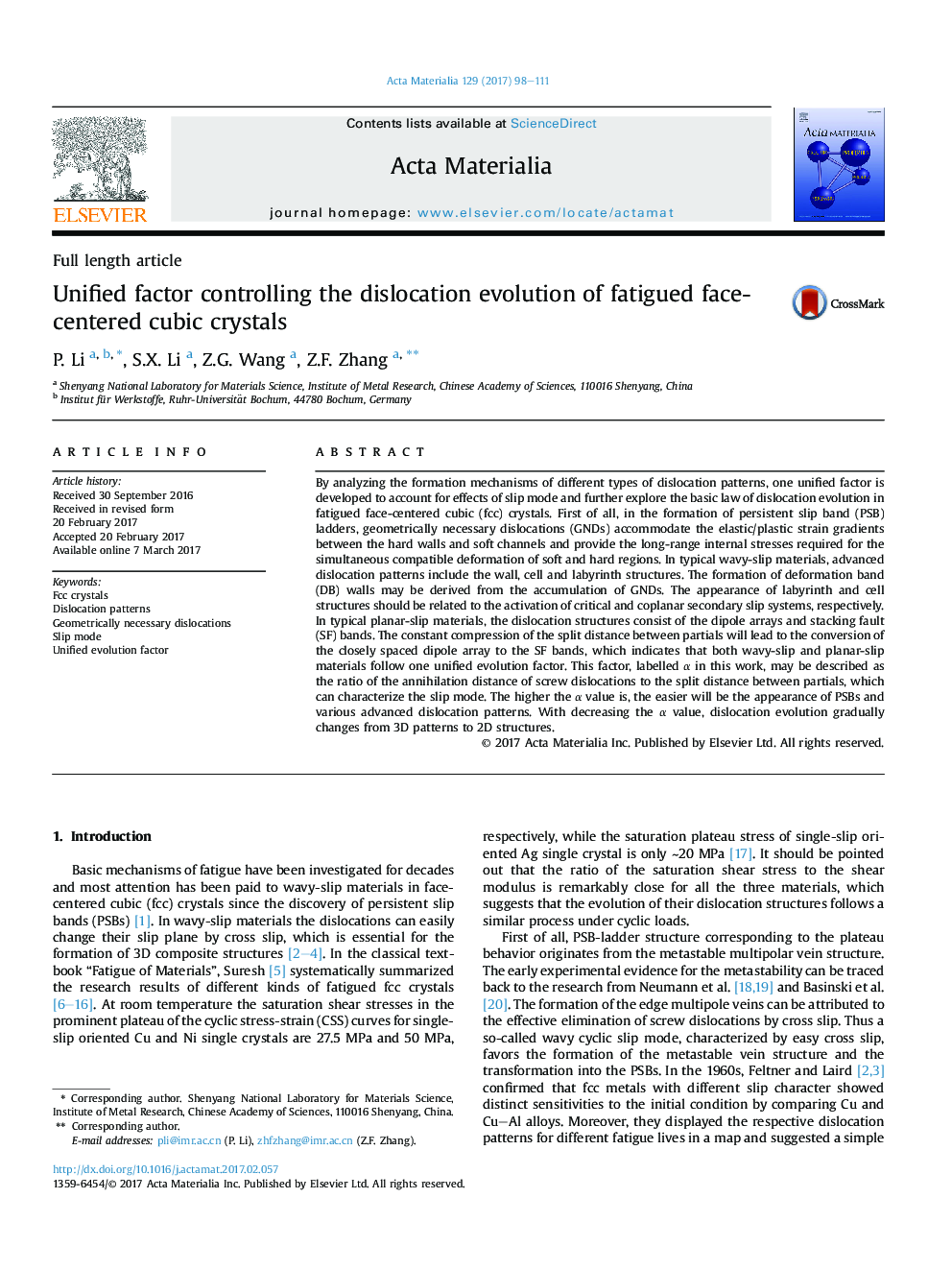| کد مقاله | کد نشریه | سال انتشار | مقاله انگلیسی | نسخه تمام متن |
|---|---|---|---|---|
| 5436208 | 1509547 | 2017 | 14 صفحه PDF | دانلود رایگان |
By analyzing the formation mechanisms of different types of dislocation patterns, one unified factor is developed to account for effects of slip mode and further explore the basic law of dislocation evolution in fatigued face-centered cubic (fcc) crystals. First of all, in the formation of persistent slip band (PSB) ladders, geometrically necessary dislocations (GNDs) accommodate the elastic/plastic strain gradients between the hard walls and soft channels and provide the long-range internal stresses required for the simultaneous compatible deformation of soft and hard regions. In typical wavy-slip materials, advanced dislocation patterns include the wall, cell and labyrinth structures. The formation of deformation band (DB) walls may be derived from the accumulation of GNDs. The appearance of labyrinth and cell structures should be related to the activation of critical and coplanar secondary slip systems, respectively. In typical planar-slip materials, the dislocation structures consist of the dipole arrays and stacking fault (SF) bands. The constant compression of the split distance between partials will lead to the conversion of the closely spaced dipole array to the SF bands, which indicates that both wavy-slip and planar-slip materials follow one unified evolution factor. This factor, labelled α in this work, may be described as the ratio of the annihilation distance of screw dislocations to the split distance between partials, which can characterize the slip mode. The higher the α value is, the easier will be the appearance of PSBs and various advanced dislocation patterns. With decreasing the α value, dislocation evolution gradually changes from 3D patterns to 2D structures.
A unified factor α to describe dislocation evolution in fcc crystals is proposed that depends on the ratio of the annihilation distance of screw dislocations to the split distance between partials. The higher the α value is, the easier will be the appearance of PSBs and various advanced dislocation patterns. With decreasing the α value, dislocation evolution gradually changes from 3D patterns to 2D structures, which fully agrees with the present understanding on the basic laws for dislocation evolution in various fatigued fcc crystals.281
Journal: Acta Materialia - Volume 129, 1 May 2017, Pages 98-111
